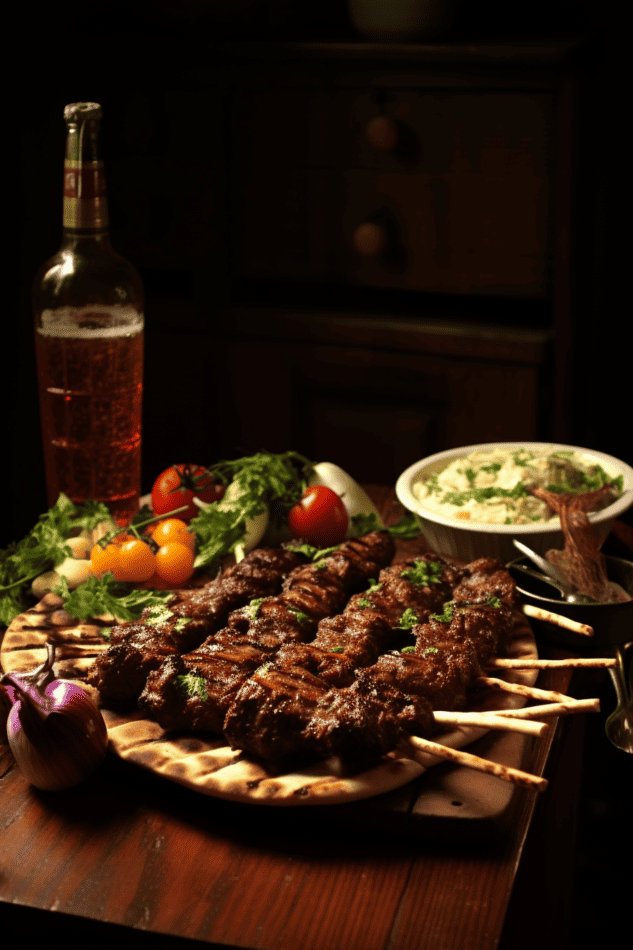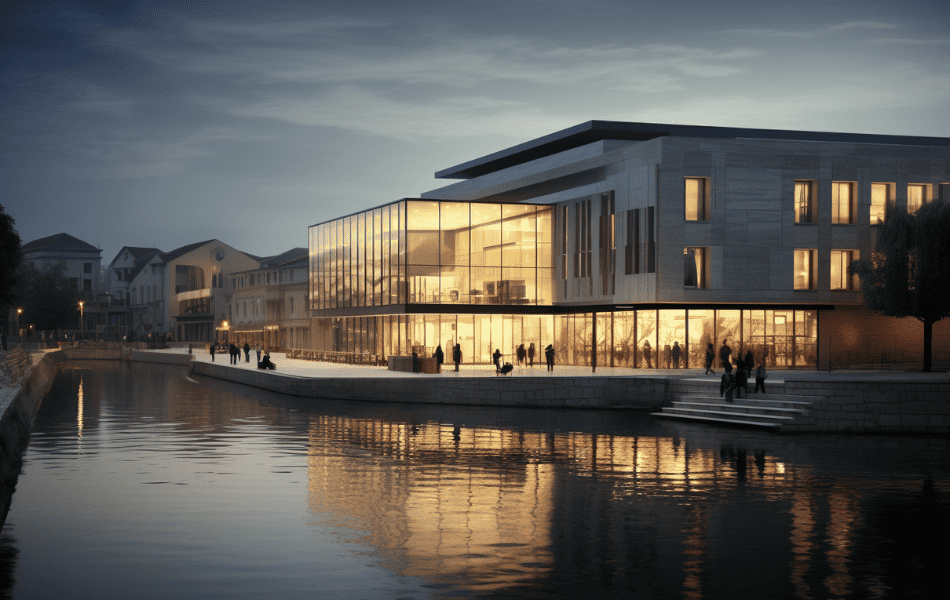Unearthing Turkey’s Hidden Delight: The rich heritage of Turkey’s Circassian community, with captivating dances, captivating attire, and deep-rooted traditions.
The Circassian community, within Turkey, like the Laz, Assyrians, Armenians, Roma, and more, with their rich cultural heritage and enduring traditions, perfectly embodies the essence of “Revealing Turkey’s Hidden Cultural Gems: a Journey Beyond.” Their presence and contributions add depth and diversity to Turkey’s cultural tapestry, inviting travelers to discover and appreciate the lesser-known treasures of this remarkable community.
Introduction
The Circassian community, residing in Turkey, boasts a rich and vibrant cultural heritage that spans centuries. Originally hailing from the Caucasus region, they have preserved their unique traditions and customs, forming a tapestry of cultural richness. The Circassians are known for their exquisite traditional attire, captivating dances, and melodic music that reflects their deep-rooted history.
However, the exact number of Circassians living in Turkey today is difficult to determine due to various factors, including self-identification and the assimilation of Circassians into the broader Turkish society over time. Nevertheless, it is estimated that there are several hundred thousand Circassians residing in Turkey.
Their intricate craftsmanship in jewelry, textiles, and culinary arts further showcases their cultural prowess. With a resilient spirit, the Circassian community in Turkey cherishes their heritage and actively promotes the preservation of their traditions, making them an integral part of Turkey’s diverse cultural landscape.
A Brief History of the Circassians in Turkey
The history of the Circassians in Turkey is one of resilience, cultural preservation, and integration. Despite the challenges faced during their migration, the Circassians have established themselves as an integral part of Turkish society, while simultaneously cherishing and safeguarding their unique Circassian heritage.
Origins and Migration: Circassians in Turkey
The Circassians trace their roots to the North Caucasus region, encompassing present-day Russia, Georgia, and other neighboring countries. In the 19th century, the Circassian homeland faced turmoil and conflict as the Russian Empire sought to expand its territories. This led to a mass migration of Circassian people, seeking refuge in various regions, including Turkey.
Settlement in Ottoman Empire: Circassians as Refugees
During the Ottoman Empire, the Circassians found refuge in different parts of present-day Turkey. They were granted land and settlements, particularly along the Black Sea coast and in areas such as Adana and Mersin. The Ottoman Empire provided a sanctuary for the displaced Circassians, and they gradually integrated into the broader cultural fabric of the empire while maintaining their distinct cultural identity.
Preservation of Culture: Circassian Heritage in Turkey
Despite the challenges faced during their migration, the Circassians in Turkey have diligently preserved their cultural heritage. They have continued to pass down their traditions, language, music, dance, and culinary practices from one generation to the next. Today, the Circassian community in Turkey plays an active role in promoting and celebrating their unique heritage through cultural events, festivals, and community initiatives.
Contribution to Turkish Society: Circassians as Active Citizens
Over the years, the Circassian community has made significant contributions to Turkish society in various fields, including politics, arts, academia, and sports. Many Circassians have excelled in their respective fields and have actively participated in the cultural, social, and political spheres of Turkey. Their presence and contributions have enriched the diversity and cultural tapestry of the country.
Circassian Traditional Clothing: A Tapestry of Elegance and Symbolism

The traditional clothing of the Circassian community is a remarkable blend of elegance, intricate craftsmanship, and cultural symbolism. Each garment tells a story and reflects the heritage of the wearer. Men often don a distinctive coat known as a “cherkeska,” adorned with decorative buttons and intricate embroidery. Women, on the other hand, wear vibrant dresses called “adige,” featuring colorful patterns and ornate details. These traditional outfits are not only a source of pride but also serve as a visual representation of Circassian identity and cultural heritage.
Enchanting Folk Dances: Capturing the Rhythm of Circassian Culture
Folk dances hold a special place in Circassian culture, embodying their collective spirit and celebrating their unity. The Circassian folk dances, such as the “Lesginka” and “Adige Khabze,” are a captivating display of grace, agility, and rhythm. Dancers clad in their traditional attire move with precision and elegance, accompanied by traditional music. Each dance has its unique choreography, reflecting aspects of daily life, storytelling, and communal celebrations. These enchanting folk dances not only entertain but also reinforce the bonds within the Circassian community, keeping their cultural heritage alive.
Sacred Rituals: Connecting the Past and Present
Circassian rituals play a significant role in honoring their ancestors and preserving cultural traditions. One such ritual is the “Nart Saga,” a form of oral storytelling that recounts the heroic tales and mythical legends of the Circassian people. Through these stories, passed down from generation to generation, the Circassians keep their history alive and instill a sense of pride and identity.
Additionally, rituals related to weddings, birth, and other significant life events serve as communal gatherings, reinforcing social ties and fostering a deep connection to their ancestral roots. These sacred rituals are an integral part of the Circassian cultural tapestry, strengthening their sense of belonging and continuity.
Exploring Circassian Cuisine: A Gastronomic Delight
Circassian cuisine is a culinary treasure that reflects the flavors of the Caucasus region and the unique culinary traditions of the Circassian community. With its emphasis on fresh ingredients, bold flavors, and aromatic spices, Circassian cuisine offers a delightful and distinctive culinary experience.

Signature Dishes: A Fusion of Tradition and Flavor
Circassian cuisine is renowned for its signature dishes that combine simplicity with robust flavors. One such dish is “Hychin,” a savory pastry made with a thin dough filled with a variety of ingredients, including meat, cheese, or vegetables. Another beloved dish is “Shashlyk,” succulent skewered meat marinated with aromatic herbs and spices, then grilled to perfection. These dishes exemplify the fusion of tradition and flavor that characterizes Circassian cuisine.
Culinary Techniques and Ingredients: Unveiling the Secrets
Circassian cuisine showcases unique culinary techniques and ingredients that contribute to its distinctiveness. Fermentation plays a crucial role, as seen in dishes like “Mamzır” – fermented cheese, and “Tarhun” – a tangy herbal drink made from the Artemisia plant. Fresh herbs, including dill, mint, and coriander, are used abundantly to enhance the flavors. Dairy products like yogurt and cheese are also prominent, adding richness and depth to various dishes.


Hospitality and Sharing: A Central Pillar of Circassian Dining
Hospitality is deeply ingrained in the Circassian culture, and it shines through their dining traditions. Circassian meals are often communal affairs, where family and friends gather around a table laden with an array of dishes. The spirit of sharing and generosity is evident in the bountiful portions and the warm, welcoming atmosphere. Guests are treated to a feast of flavors and a sense of belonging, creating lasting memories of Circassian culinary hospitality.
Circassian cuisine’s unique flavors, culinary techniques, and emphasis on hospitality make it a true gastronomic delight. Exploring the diverse dishes and culinary traditions of the Circassian community offers an opportunity to savor the rich heritage and cultural tapestry embedded in their cuisine.
Immersive Experiences: Regions and Events to Explore Circassian Culture
By exploring regions like Maçahel, attending Kafkasör Festivities, and visiting the Circassian Cultural Center in Ankara, travelers can actively engage in immersive experiences and connect with the vibrant Circassian culture in Turkey. These opportunities create lasting memories and foster a deeper appreciation for the rich heritage of the Circassian community.

1. Discovering Maçahel: Unveiling Circassian Heritage in Artvin
Nestled in the scenic province of Artvin, the Maçahel region offers a captivating glimpse into the Circassian culture. Explore the picturesque villages, where you can witness traditional practices, taste authentic Circassian cuisine, and interact with locals who proudly preserve their heritage. Don’t miss the Maçahel Cultural Festival, held annually, which showcases Circassian folk dances, music, and arts, providing a vibrant immersion into the community’s traditions.
2. Engaging in Kafkasör Festivities: A Celebration of Circassian Identity
Head to the Kafkasör Plateau in the Düzce province, where the Kafkasör Festivities take place. This annual event brings together Circassians from various regions, offering an immersive experience of Circassian customs and traditions. Enjoy vibrant folk dances, mesmerizing music performances, and traditional sports competitions, and indulge in delectable Circassian delicacies. The festival provides a unique opportunity to connect with the Circassian community and witness their cultural pride.
3. Exploring the Circassian Cultural Center in Ankara: A Hub of Cultural Exchange
Visit the Circassian Cultural Center in Ankara, Turkey’s capital city, which serves as a hub for preserving and promoting Circassian culture. Engage in language classes, participate in cultural workshops, and attend events showcasing Circassian music, dance, and culinary demonstrations. The center offers a platform for meaningful cultural exchange, allowing travelers to immerse themselves in the Circassian community and gain a deeper understanding of their traditions.
Preserving the Legacy: Community-Led Initiatives and Cultural Centers Safeguarding Circassian Traditions
These community-led initiatives and cultural centers are instrumental in preserving Circassian traditions, nurturing cultural pride, and creating spaces for the transmission of knowledge and customs. Through their tireless efforts, they ensure the longevity and vitality of Circassian heritage in Turkey and contribute to the overall diversity and richness of the country’s cultural landscape.

- Circassian Cultural Foundation, Istanbul: Nurturing Circassian Identity: The Circassian Cultural Foundation, situated in Istanbul, plays a pivotal role in safeguarding Circassian traditions and fostering a sense of identity among the Circassian diaspora. The foundation organizes cultural events, educational programs, and exhibitions that showcase Circassian history, music, dance, and folklore. It serves as a cultural hub, connecting the Circassian community and providing a space for cultural exchange and preservation.
- Adige Cultural Center, Adana: Promoting Adige Culture in Southern Turkey: The Adige Cultural Center, located in Adana, focuses on preserving and promoting Adige culture, a distinct Circassian subgroup. The center hosts language classes, art workshops, and traditional music and dance performances, allowing individuals to engage with Adige traditions firsthand. It serves as a vital resource for the local Adige community, fostering a sense of pride and continuity in their cultural heritage.
5 Famous Circassian Quotes
These quotes, spoken by influential Circassian figures throughout history, encapsulate the spirit, values, and wisdom of the Circassian community.
“Courage is the foundation of victory.”
Imam Shamil
Imam Shamil, a prominent Circassian leader and Islamic scholar, uttered this quote as he led the resistance against Russian expansion into the North Caucasus in the 19th century. His words inspire bravery and determination in the face of adversity.
“He who does not know his roots cannot find his way.”
Kanshau Narts
Kanshau Narts, a legendary figure in Circassian mythology and folklore, expressed the importance of understanding one’s heritage and origins. This quote emphasizes the significance of cultural identity and its role in shaping individuals.
“The heart of a Circassian is like a fortress, unyielding and unwavering.”
Prince Sefer
Prince Sefer, a prominent Circassian prince and military leader, highlighted the resilient nature of the Circassian people. This quote reflects their steadfastness, determination, and commitment to preserving their culture and values.
“Words are like arrows, once spoken, they cannot be taken back.”
Fatima Nakrua
Fatima Nakrua, a renowned Circassian poet and writer, emphasized the power and impact of words. This quote serves as a reminder of the responsibility that comes with speech and the need for thoughtful communication.
“Through unity, we find strength.”
Ubykh Proverb
The Ubykh, a Circassian subgroup, conveyed the importance of unity in this proverb. It signifies the collective power that arises when individuals come together, supporting and uplifting one another to achieve common goals.
Other super blogs related to this topic are:
Recent Posts
Discover insider tips to find cheap flights from the UK, save on easyJet, Ryanair & BA, and score the best weekend and last-minute deals. Why You’re Paying Too Much for Flights Most UK...
Discover the sounds of travel, from laughing kookaburras to market chatter, church bells to ocean waves - a journey heard as much as seen. It always starts with a sound. The other day, walking...

